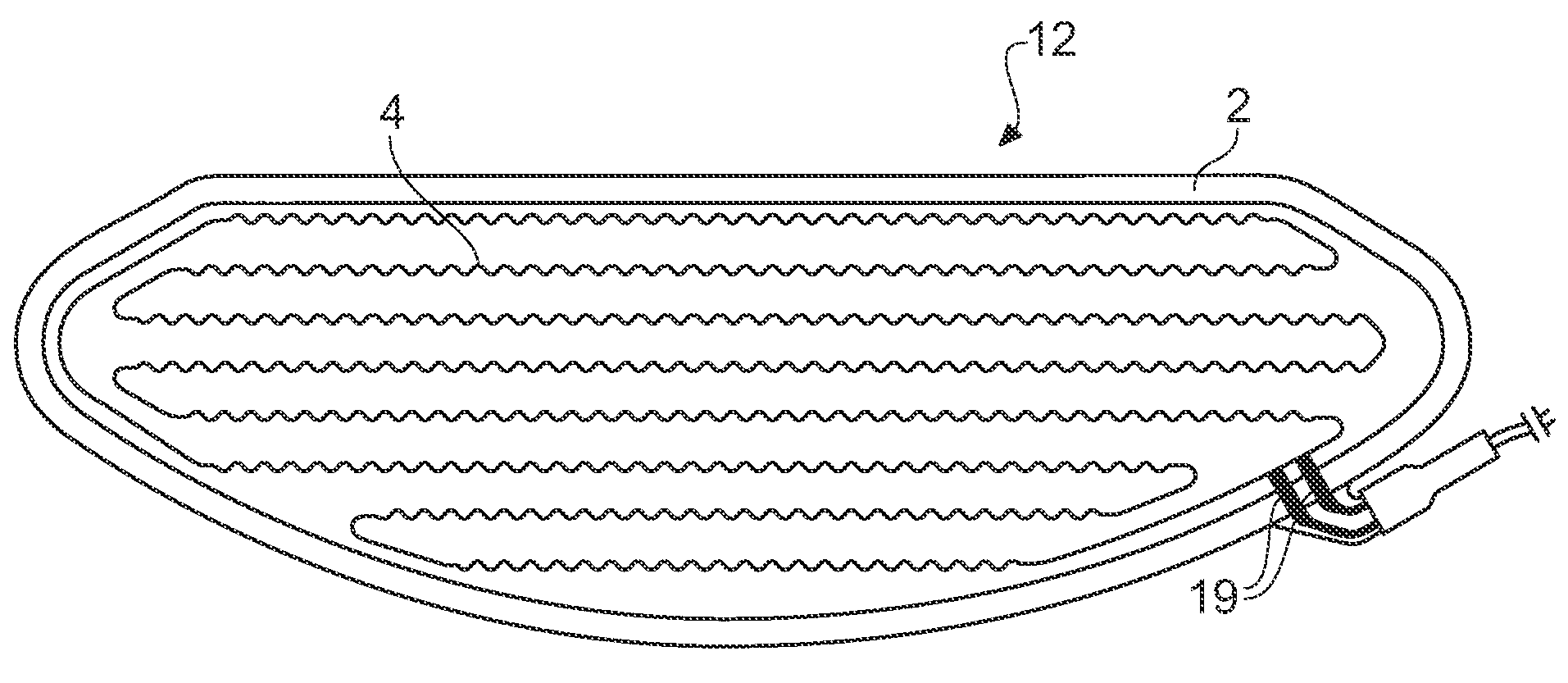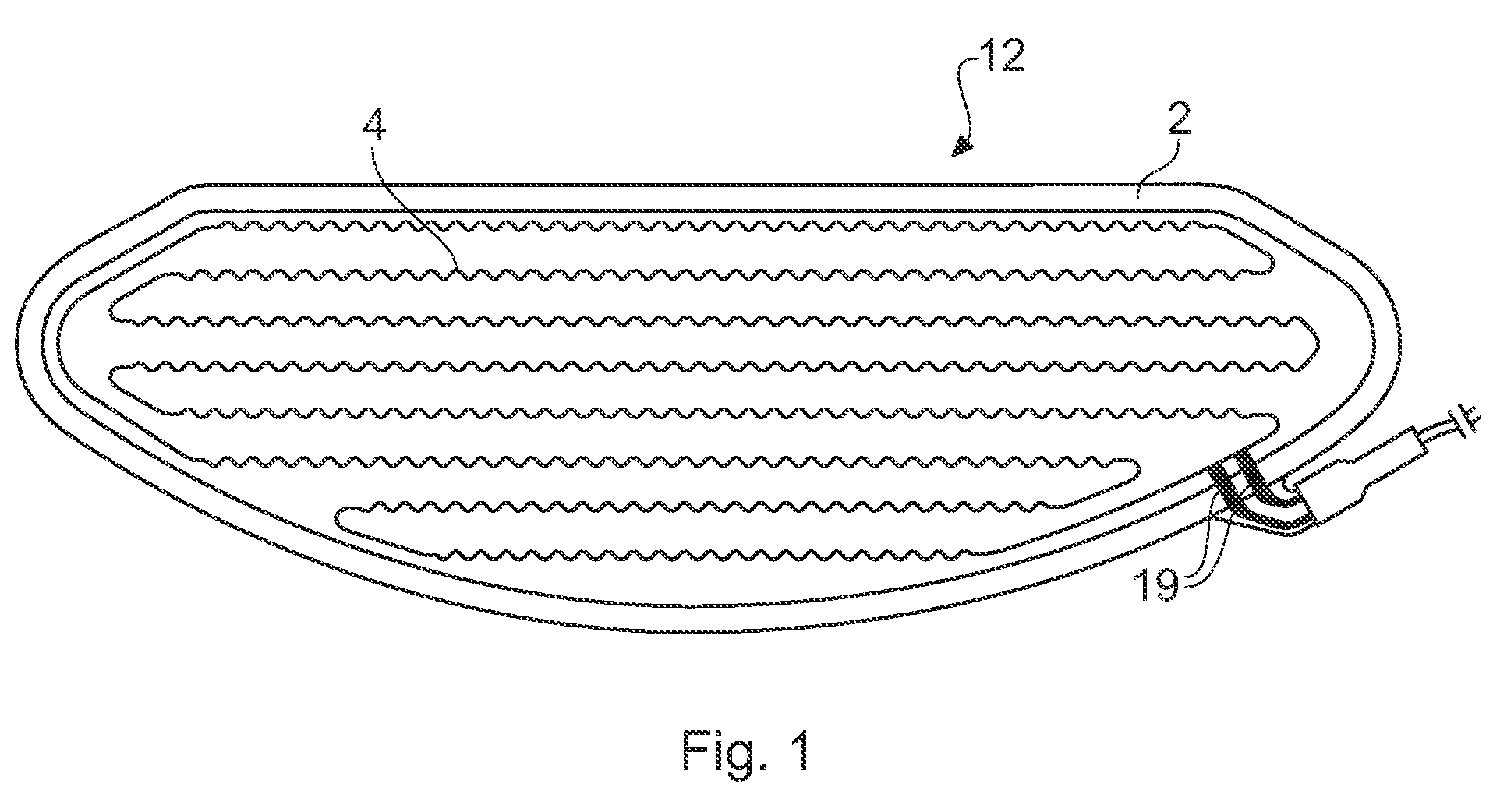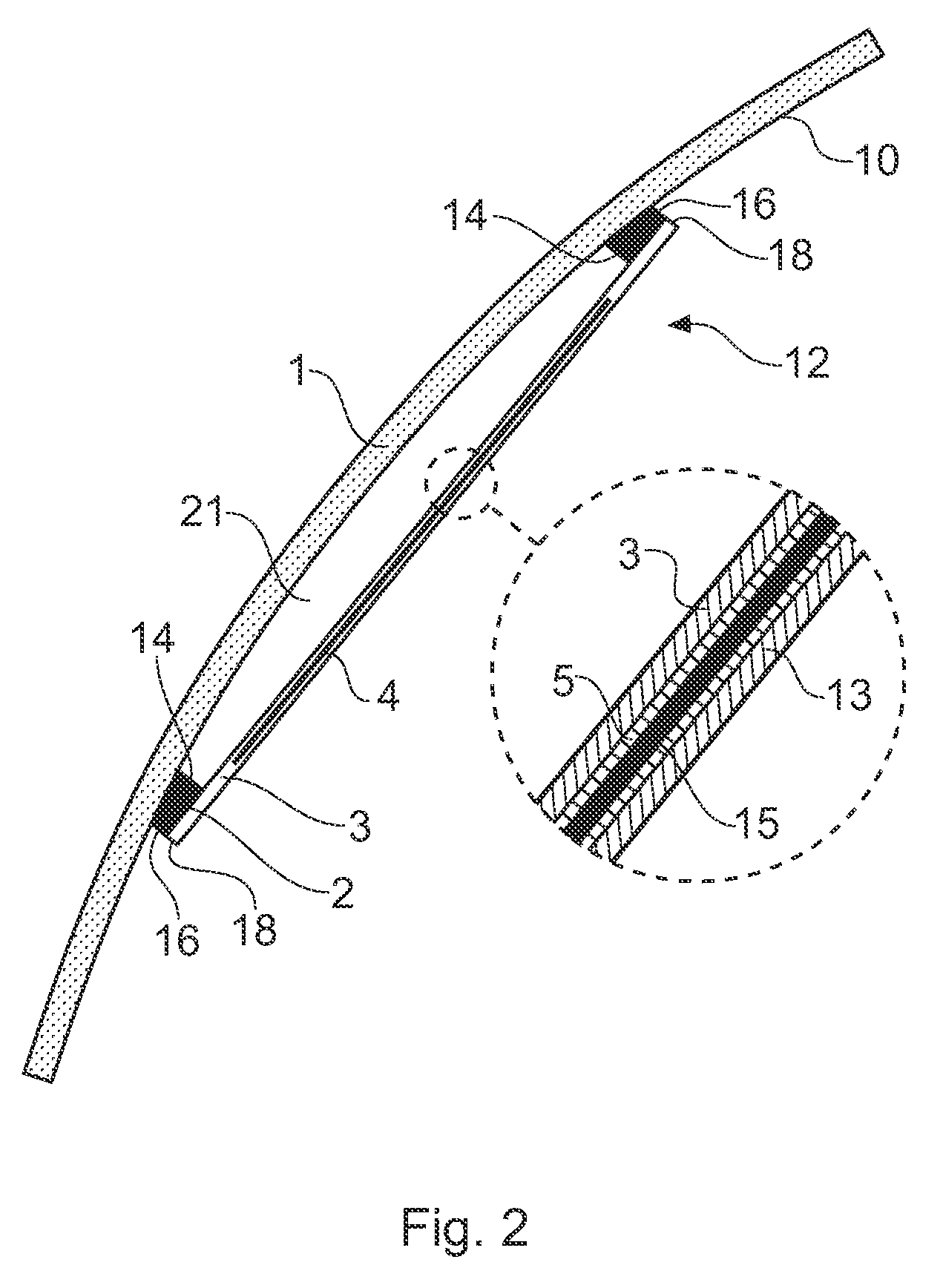Anti-Fogging Device and Anti-Fogging Viewing Member
a viewing member and anti-fogging technology, applied in the direction of heater elements, vehicle maintenance, heating element shapes, etc., can solve the problems of reducing the adhesion of the viewing member, so as to reduce the thickness and reduce the heat capacity. , the effect of high adhesion
- Summary
- Abstract
- Description
- Claims
- Application Information
AI Technical Summary
Benefits of technology
Problems solved by technology
Method used
Image
Examples
Embodiment Construction
[0065]The preferred embodiments of the invention will first be described with reference to a device for reducing or preventing fogging of a visor of a motorcycle helmet.
[0066]FIG. 1 shows a plan view of an anti-fogging device 12 of the present invention, for use on a motorcycle visor. The anti-fogging device 12 has a continuous adhesive pad 2 disposed at its perimeter. This adhesive pad is the preferred form of the adhesive element discussed above. The outer edges of the continuous adhesive pad are coterminous with the outer edges of the device.
[0067]The device has a heating element 4 which is in the form of a continuous track having a meandering pattern so that adjacent portions of the track are separated by a distance of between 0.5-2 cm, typically about 1 cm, at the vision area of the viewing member. The element is adapted to provide a power density of typically 36-108 watts per square foot. The element resistance may be selected according to the application, in order to provide ...
PUM
 Login to View More
Login to View More Abstract
Description
Claims
Application Information
 Login to View More
Login to View More - R&D
- Intellectual Property
- Life Sciences
- Materials
- Tech Scout
- Unparalleled Data Quality
- Higher Quality Content
- 60% Fewer Hallucinations
Browse by: Latest US Patents, China's latest patents, Technical Efficacy Thesaurus, Application Domain, Technology Topic, Popular Technical Reports.
© 2025 PatSnap. All rights reserved.Legal|Privacy policy|Modern Slavery Act Transparency Statement|Sitemap|About US| Contact US: help@patsnap.com



